- News
- Reviews
- Bikes
- Accessories
- Accessories - misc
- Computer mounts
- Bags
- Bar ends
- Bike bags & cases
- Bottle cages
- Bottles
- Cameras
- Car racks
- Child seats
- Computers
- Glasses
- GPS units
- Helmets
- Lights - front
- Lights - rear
- Lights - sets
- Locks
- Mirrors
- Mudguards
- Racks
- Pumps & CO2 inflators
- Puncture kits
- Reflectives
- Smart watches
- Stands and racks
- Trailers
- Clothing
- Components
- Bar tape & grips
- Bottom brackets
- Brake & gear cables
- Brake & STI levers
- Brake pads & spares
- Brakes
- Cassettes & freewheels
- Chains
- Chainsets & chainrings
- Derailleurs - front
- Derailleurs - rear
- Forks
- Gear levers & shifters
- Groupsets
- Handlebars & extensions
- Headsets
- Hubs
- Inner tubes
- Pedals
- Quick releases & skewers
- Saddles
- Seatposts
- Stems
- Wheels
- Tyres
- Health, fitness and nutrition
- Tools and workshop
- Miscellaneous
- Tubeless valves
- Buyers Guides
- Features
- Forum
- Recommends
- Podcast
review
£1,150.00
VERDICT:
Not the lightest bike in this price range but an enjoyable ride thanks to the relaxed geometry, stability and IsoSpeed technology
Weight:
8,980g
Contact:
www.trekbikes.com/uk
At road.cc every product is thoroughly tested for as long as it takes to get a proper insight into how well it works. Our reviewers are experienced cyclists that we trust to be objective. While we strive to ensure that opinions expressed are backed up by facts, reviews are by their nature an informed opinion, not a definitive verdict. We don't intentionally try to break anything (except locks) but we do try to look for weak points in any design. The overall score is not just an average of the other scores: it reflects both a product's function and value – with value determined by how a product compares with items of similar spec, quality, and price.
What the road.cc scores meanGood scores are more common than bad, because fortunately good products are more common than bad.
- Exceptional
- Excellent
- Very Good
- Good
- Quite good
- Average
- Not so good
- Poor
- Bad
- Appalling
The Trek Lexa SLX may be built for comfort, but that doesn't mean this women's road bike is a slouch. Its shock-damping ride makes it comfortable on bad roads and confidence-inspiring everywhere.
Trek have a large line-up of women specific (WSD) road bikes, and the top end technologies are filtering down through the budgets, right through to the £1150 Lexa SLX.
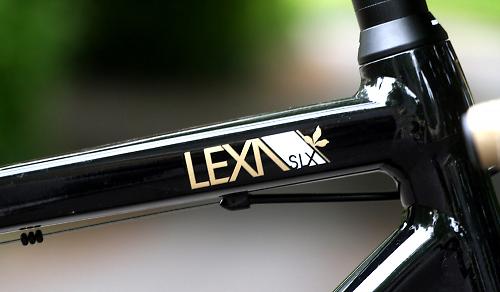
The Lexa SLX is designed with a similar rider in mind as the Domane WSD range: the female endurance rider who values comfort and a relaxed ride, but at a lower price.
Both the Lexa SLX and the Domane bikes feature the IsoSpeed decoupler, probably their main selling point and a comfort bonus for the endurance rider too. They have the same geometry and a tall head tube, 14.5cm in length, that's good for riders wanting a comfortable view of the road whilst minimising neck and back strain.

The wheelbase is 3cm longer than the more race-oriented Madone WSD range. Our 52cm Lexa SLX has a 100.3cm wheelbase and is designed with increased stability in mind. The extended wheelbase is achieved with a more relaxed head angle, longer chainstays and a fork with a longer sweep; the effective top tube length is 53cm.
One last point about the geometry is the lowered bottom bracket position, providing a more stable feel to the ride. It's worth noting that other bikes in the Lexa range have a different geometry and a more recreational focus, and so provide less of a useful comparison here.
Frame
Both the Domane WSD range and the Lexa SLX share the IsoSpeed technology, basically a linkage separating the top tube and the seat tube, that allows both tubes to be independent rather than joined as they are in normal frame designs.

The seat tube has two different aluminium tubes welded together. You can see the weld if you take a peek just below the top tube. This allows different tubing properties to be used and in layman's terms it allows the seat tube to flex and move backwards slightly to absorb road stutter, vibration, bumps and such things.
We're not talking about a huge amount of movement like mountain bike suspension, more like micro-movement really, but enough to increase vertical compliance and comfort. The IsoSpeed isolates the movement of the seat tube and the rest of the frame so it absorbs more of the road shock, and it really does work.

Using Trek's premium aluminium the tubing has been hydroformed to produce varying tube shapes and different properties to maximize aerodynamics and strength while keeping weight low. Trek call their hard-to-find mudguard mounts 'vanishing', rightly so as they are beautifully integrated in the frame and fork design; you can barely see them.
Another useful detail is the SpeedTrap compatible computer sensor integrated into the fork leg. Recording speed and distance is simple and no need for bulky sensors or wires either.

It's not just the frame that offers a comfortable ride, the carbon-legged fork is designed to absorb more of the road shock and increases front to rear compliance – that's flex in a good way. The fork is laterally stiff so you get good steering control, and the sweeping leg shape with the extra curve at the dropout minimises vibrations traveling up the fork to the frame and rider.
Specification
Shimano's mid-range 105 components make up the derailleurs and shifter/brake combination, whilst Shimano Tiagra parts (one level down in terms of groupset heirachy) are used for the cassette and crankset.

The double chainset has compact sizing (50/34) and combined with 10 gears (12-30), both cruising along and climbing needs were well addressed. There were no complaints about the reliability or quality of the moving components, everything functioned just fine and made a durable groupset.
The 105 brake levers offer adjustable reach by inserting a 5mm or 10mm shim to bring the lever closer to the bar.
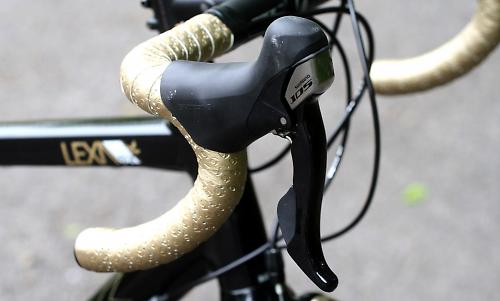
Saddle, seatpost, stem and bars are all from Trek's in-house brand Bontrager and don't let the side down at all. The Bontrager Affinity 1 WSD saddle is comfortable from the off, with its plush and supportive padding providing even more respite from harsh roads. The Bontrager Race VR-S bars are a good width (40cm) for female riders, while the pimpy gold handlebar tape and brakes grew on us.
The wheelset survived the poor quality roads, the aluminium hubs with Bontrager Approved rims were solid and dependable and fitted with Bontrager R1 25mm tyres they felt pretty compliant too. It's worth noting that this wheelset is standard on the Domane 4.3 WSD, which is priced considerably more at £1800.
The ride
Being brutally honest I wasn't looking forward to testing an aluminium frame. I enjoy a carbon frame and the comfort it provides, especially with my fragile lower back getting hammered by the state of UK roads.
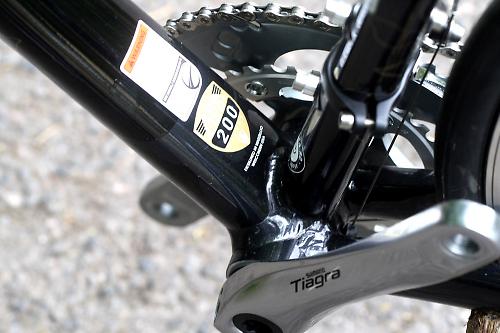
I found I could ride for longer in more comfort thanks to the IsoSpeed system, and being sensitive to rough roads this is a real bonus. I could sit firmly in the saddle and power on through rough road sections without breaking a pedal stroke.
To find out exactly how much of the nasty road surface was being absorbed by the frame, we switched the plush saddle and voluminous 25mm tyres for less forgiving alternatives. The resulting rides were only marginally less comfortable, proving the decoupler really did provide the road shock absorption as promised and it wasn't down to plush contact points or fatter tyres.
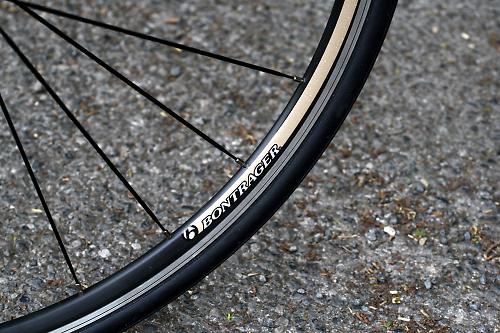
Most riders should feel the increased comfort over standard aluminium frames and appreciate the reduced road buzz and associated body fatigue. There is no noticeable disadvantage in terms of reduced stiffness to the frame or added weight either.
The longer wheelbase made for a confidence-inspiring ride, the bike felt really stable and controllable and was in its element on open country roads and while descending. You might expect the extra length to be restrictive on tighter radius turns but this wasn't a particular issue.

Fast descents and open corners were a dream and the bike whizzed across rough sections of road without hesitation. Both the longer wheelbase and taller headtube would provide novice riders a leg up in terms of improving their handling and increased downhill speeds, as the bike felt planted to the road in a very positive way.
At £1150 you can't expect a super-lightweight bike, and at 8.6kg (almost 19lb) it's not a race bike, but it certainly doesn't feel heavy to ride. Performance-wise sprinting and climbing aren't remarkable, but let's remember this is not a race bike and it does both adequately well and once at cruising speed there are no complaints.
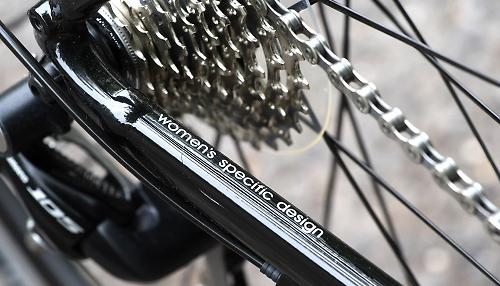
It zips along and covers high mileages with ease, sportives and long rides are what this bike is designed for. If you're intent on racing then have a look at the Madone 3 Series; prices start at £1500 for a carbon frame with the same Shimano 105/Tiagra groupset and parts as the Lexa SLX. The geometry of the Madone range is more in tune with the needs of a race ready bike over comfort.
Conclusion
Overall the Lexa SLX impressed us, especially in terms of comfort over long distances, where the IsoSpeed system and the extra compliance certainly reduces rider road fatigue. If you're in the market for a sub £1200 endurance road bike than you need to test ride this bike and try out the IsoSpeed as it stands the Lexa SLX apart from its rivals.
The relaxed geometry is confidence inspiring and makes for a very stable ride. The spec is pretty good, especially for the price, it's good to see few corners have been cut to facilitate the technological advances in the frame and fork.
Verdict
A women specific endurance biased road bike designed with comfort in mind. Not the lightest bike in this price range but an enjoyable ride thanks to the relaxed geometry, stability and IsoSpeed technology.

road.cc test report
Make and model: Trek Lexa SLX
Size tested: 53
About the bike
State the frame and fork material and method of construction. List the components used to build up the bike.
Frame 200 Series Alpha Aluminium, IsoSpeed, press-fit BB
Fork Trek IsoSpeed carbon, SpeedTrap compatible
Wheels Aluminium hubs w/Bontrager Approved aluminium rims
Tyres Bontrager R1, 700x25c
Shifters Shimano 105 STI, 10 speed
Front derailleur Shimano 105, 31.8mm clamp
Rear derailleur Shimano 105
Crank Shimano Tiagra, 50/34 (compact)
Cassette Shimano Tiagra 12-30, 10 speed
Saddle Bontrager Affinity 1 WSD, steel rails
Seatpost Bontrager Race Lite, infinite tilt adjustment, 20mm offset
Handlebar Bontrager Race VR-S, 31.8mm
Stem Bontrager Race Lite, 31.8mm, 7 degree
Headset 1-1/8" semi-cartridge bearings
Brakeset Aluminium dual-pivot brakes with Shimano 105 STI levers
Grips Bontrager Gel Cork tape
Frame and fork
Overall rating for frame and fork
8/10
Tell us about the build quality and finish of the frame and fork?
Good quality frame and fork and the IsoSpeed decoupler adds to the comfort and endurance capabilities of this bike.
Tell us about the materials used in the frame and fork?
200 Series Alpha Aluminium
Tell us about the geometry of the frame and fork?
Trek's Endurance geometry is a more relaxed geometry than found on their race bikes, namely the Madone WSD range
Greater fork offset
Much of Domane's rock-solid stability comes from a race-tested 20% increase in fork offset over Madone
As befits Domane, the world's most comfortable performance racing bike, we've developed the world's most comfortable racing geometry. Still racy, but with a slightly higher head tube.
Riding the bike
Was the bike comfortable to ride? Tell us how you felt about the ride quality.
Trek's Endurance geometry is definitely comfortable but above all the IsoSpeed decoupler enhanced ride comfort on longer rides. As a seeker of long, hilly rides and having thrown off my race jersey some years ago, I'd definitely opt for comfort and endurance qualities over a responsive race ride any day.
Did the bike feel stiff in the right places? Did any part of the bike feel too stiff or too flexible?
The IsoSpeed system provides a good degree of compliance without reducing lateral stiffness or adding any weight.
How did the bike transfer power? Did it feel efficient?
The Lexa SLX is not a snappy race bike and won't be the first off the line, but then again it doesn't claim to be and nor should we expect that. Once up to speed it moves along a nice swift pace and gets the job done with no fuss and in comfort. The BB86.5 bottom bracket is wide and stiff providing a solid base for acceleration and enhancing the stable ride characteristics.
Was there any toe-clip overlap with the front wheel? If so, was it a problem?
Not particularly noticeable, better than most.
How would you describe the steering? Was it lively, neutral or unresponsive? Definitely neutral with solid cornering and a planted feel on the road.
Tell us some more about the handling. How did the bike feel overall? Did it do particular things well or badly?
Being stable with a generous wheelbase length meant descending was confidence inspiring, and having some 'give' due to the IsoSpeed feature meant I didn't pay any concern to road surface other than avoiding potholes.
Which components had the most effect (good or bad) on the bike's stiffness? would you recommend any changes?
I've talked loads about the IsoSpeed decoupler already and am clearly a fan!
Rate the bike for efficiency of power transfer:
7/10
Rate the bike for acceleration:
6/10
Rate the bike for sprinting:
6/10
Rate the bike for high speed stability:
8/10
Rate the bike for cruising speed stability:
9/10
Rate the bike for low speed stability:
8/10
Rate the bike for flat cornering:
7/10
Rate the bike for cornering on descents:
8/10
Rate the bike for climbing:
6/10
The drivetrain
Rate the drivetrain for performance:
7/10
Rate the drivetrain for durability:
8/10
Rate the drivetrain for weight:
7/10
Rate the drivetrain for value:
8/10
Wheels and tyres
Rate the wheels and tyres for performance:
7/10
Rate the wheels and tyres for durability:
7/10
Rate the wheels and tyres for weight:
6/10
Rate the wheels and tyres for comfort:
7/10
Rate the wheels and tyres for value:
7/10
Controls
Rate the controls for performance:
7/10
Rate the controls for durability:
8/10
Rate the controls for weight:
7/10
Rate the controls for comfort:
6/10
Rate the controls for value:
8/10
Your summary
Did you enjoy riding the bike? Yes, more than expected. I wasn't looking forward to riding an aluminium frame over longer distances and was pleasantly surprised by the reduced fatigue and performance of the IsoSpeed decoupler.
Would you consider buying the bike? If I had a budget of £1150 then yes, I'd prefer the Lexa SLX to a standard aluminium frame anyway.
Would you recommend the bike to a friend? Yes, for someone who wants an endurance bike with added comfort.
Rate the bike overall for performance:
8/10
Rate the bike overall for value:
8/10
About the tester
Age: 0 Height: Weight:
I usually ride: My best bike is:
I've been riding for: I ride: I would class myself as:
I regularly do the following types of riding:
Latest Comments
- belugabob 48 sec ago
"with organisers saying they were absolutely stunned by the turnout." Stumped would be a better word, surely...?
- EddyBerckx 2 min 23 sec ago
"I am finding people riding on segregated cycle lanes without lights on,"...
- chrisonabike 4 min 47 sec ago
Yes (and prison will at least stop them while they're there, albeit at cost...) But ... to a first approximation it's always going to be OK in...
- jaymack 28 min 19 sec ago
"I never paid attention to my financial affairs...". It may sound harsh as I'm sure he was royally taken advantage of but most people don't have...
- the little onion 1 hour 16 min ago
Rather artistic photo of this (driverless) car that has ended up on its roof on a dead straight road in Bradford....
- hawkinspeter 2 hours 1 min ago
Cool - that removes one of my issues with Garmin. I'm quite happy with the Wahoo Elemnt Bolt, so I doubt that I'll be switching unless Garmin come...
- slc 2 hours 56 min ago
No doubt it will catch on in Plymouth, but it is Devon, where everything happens 10 years later. Not least the buses....
- mctrials23 3 hours 37 min ago
GCN just did a cool video on this. All I could think by the end was that perhaps if you got to do what the presenter did and mince around Italy in...
- ravenbait 3 hours 46 min ago
I missed that, thanks for pointing it out. I can't comment, as that's outside my area of expertise. Apologies to Rendel. This is why they should be...




























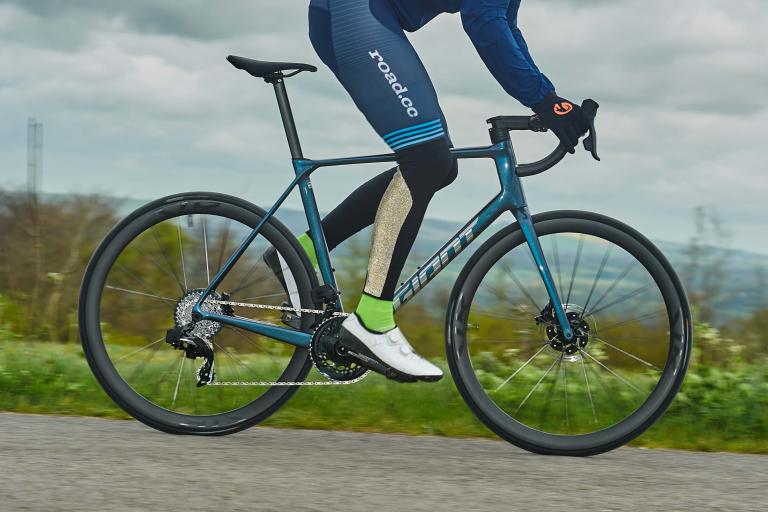

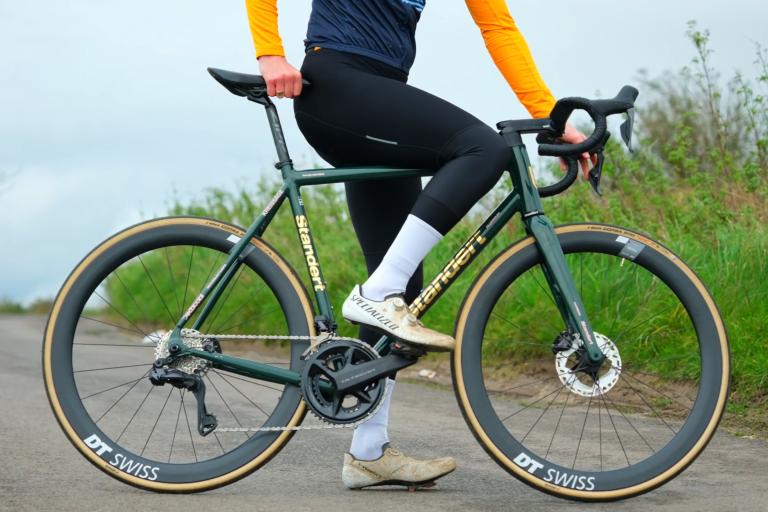
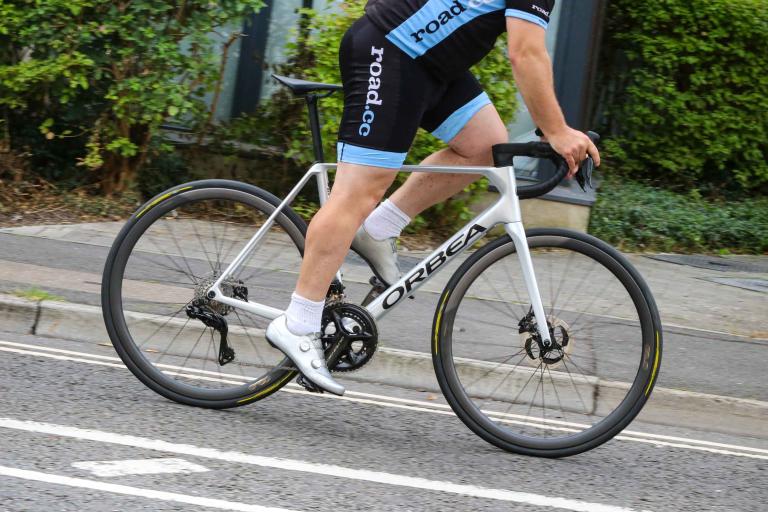
Add new comment
2 comments
Has anyone ever tried to fit mudguards on a trek with the vanishing mounts?, the clearances look extremely tight.
"at 8.6kg (almost 19lb) it's not a race bike"
I would take issue with that; a few pounds difference makes very little impact, and certainly not enough for amateur riders to be aware of.
It's a perfectly raceable bike.